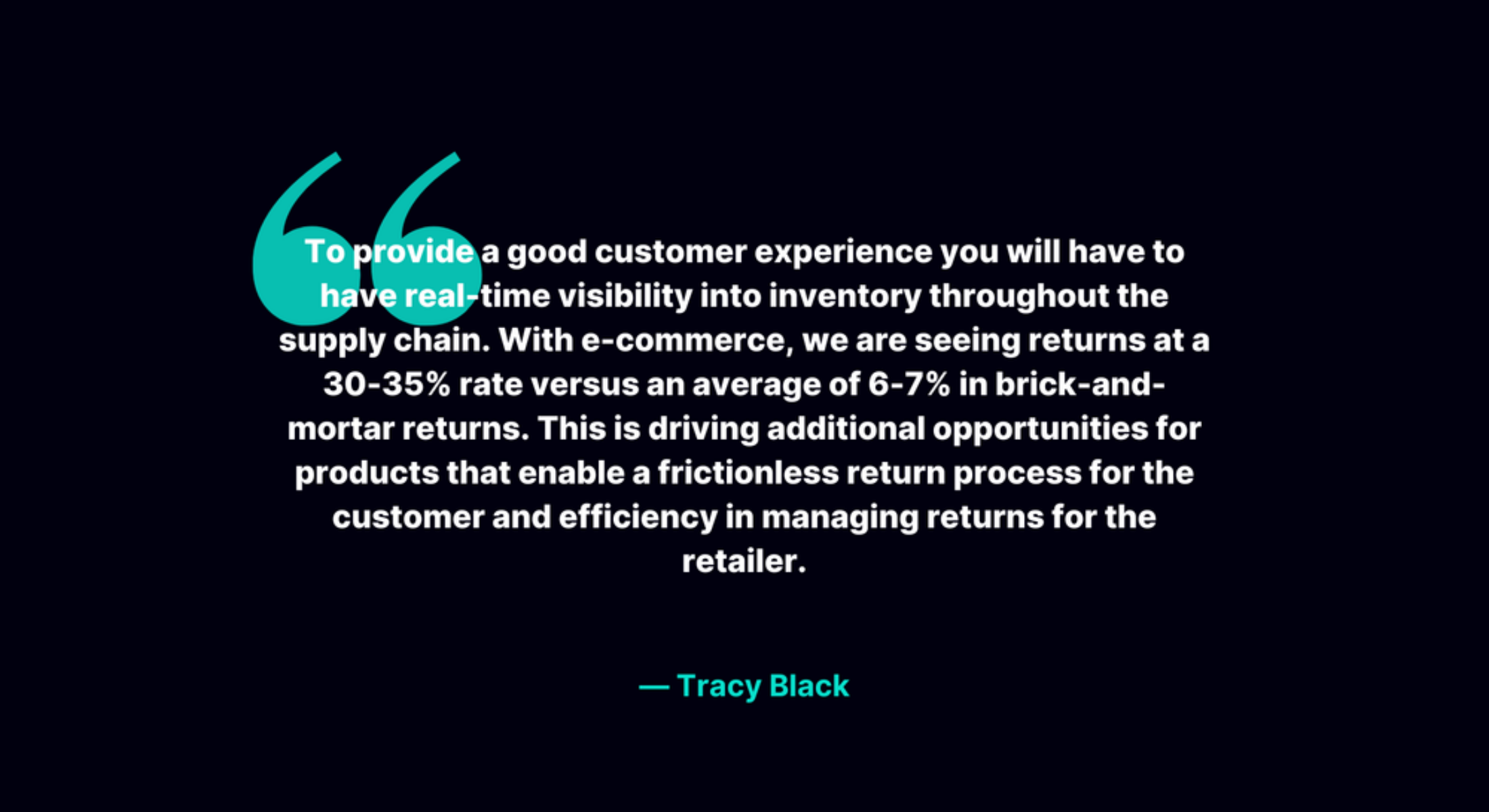2021 Ecosystem Predictions — Supply Chain Technologies will be in the Limelight

The pandemic in 2020 highlighted the need to make supply chains more resilient. Technology to digitize the supply chain and data to give visibility and insight into decision making throughout the supply chain has become critical. Covid-19 accelerated the move to e-commerce by 3-5 years and the volume of packages is expected to triple over the next decade. Final mile is now the largest growing segment in the transportation logistics industry and the adoption of contactless delivery processes has become the standard. The Amazon effect continues to drive behavior change across the industry. Consumers started expecting free shipping as the norm with Amazon Prime, and now they have evolved to expecting on-demand same-day shipments. Out of stock items and delays in shipping in 2020 have eroded consumer trust. In 2021 you will see a shift to expect transparency in shipping.
Customers want certainty. To provide a good customer experience you will have to have real-time visibility into inventory throughout the supply chain. With e-commerce, we are seeing returns at a 30-35% rate versus an average of 6-7% in brick-and-mortar returns. This is driving additional opportunities for products that enable a frictionless return process for the customer and efficiency in managing returns for the retailer. You will see continued digitization of the supply chain including more real-time API integrations across all parties of the supply chain that allow optimization of scheduling to provide shorter delivery times and lower costs. Real-time updates can decrease the number of failed deliveries and reschedules thereby reducing cost. IoT and robotics will be used to make supply chains more efficient and enhance visibility. Warehouses will implement automation technologies that augment human workers, speed up repetitive tasks, make inventory management more efficient, make warehouses safer, and ensure continuity of operations.
Artificial Intelligence and machine learning will be used for collaborative planning, matching supply and demand, and enabling data-driven decisions to reduce out of stocks.
Resiliency and Sustainability in the Supply Chain
Technologies supporting sustainability will continue to gain traction. Many of the Fortune 500 have committed to obtaining a carbon-neutral footprint. Nasdaq has published Environmental Social and Governance (ESG) reporting guidelines. Chief Sustainability Officers are on the rise. Transportation is one of the largest contributors to greenhouse gas emissions in the U.S. Technologies that reduce the number of miles, reduce the amount of emissions, or allow consolidation of multiple items into one shipment will be implemented to address these issues. Locating inventory closer to customers and technology to support more efficient fulfillment of those orders will also have a positive impact on sustainability efforts.
2021 Mantra
“Voice of the customer rules.”
About Tracy Black
Tracy Black, former SVP at J.B. Hunt Transport Services, has 30 years of experience in leadership and supply chain technology. As a member of the executive team for fortune 500 transportation company, J.B. Hunt Transport Services, Tracy built and led the technology team. In her role as Senior Vice President Information Technology, she was responsible for IT Strategy, technology vendor relationships and key customer technology roadmaps. In 2007, Tracy was named one of Computerworld’s Premier 100 IT leaders and in 2008 received the Information on Demand Innovation award from IBM.